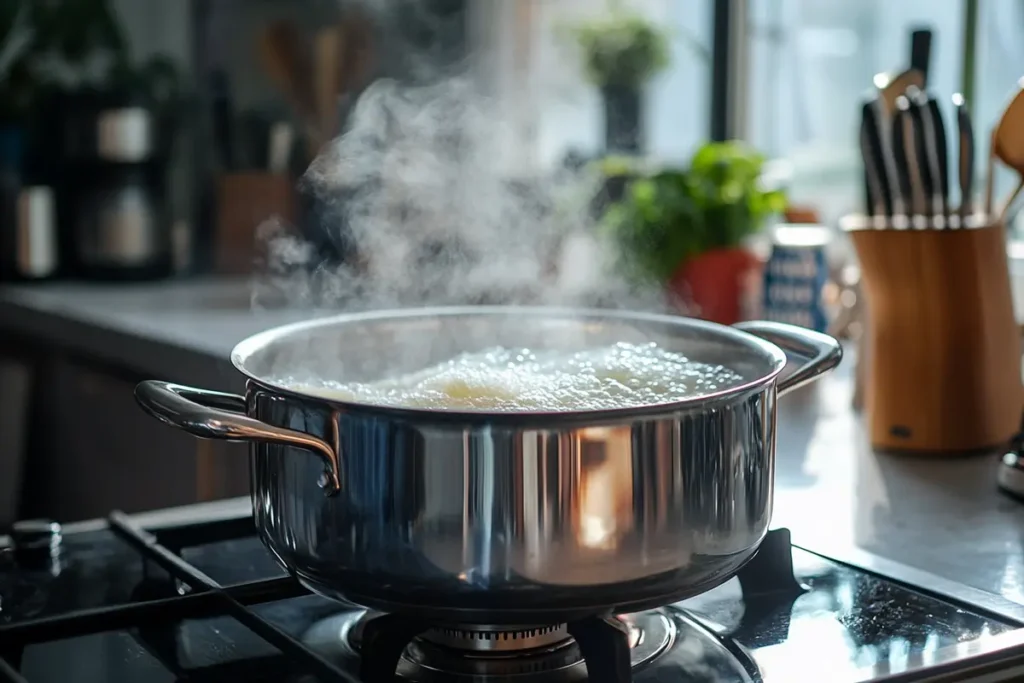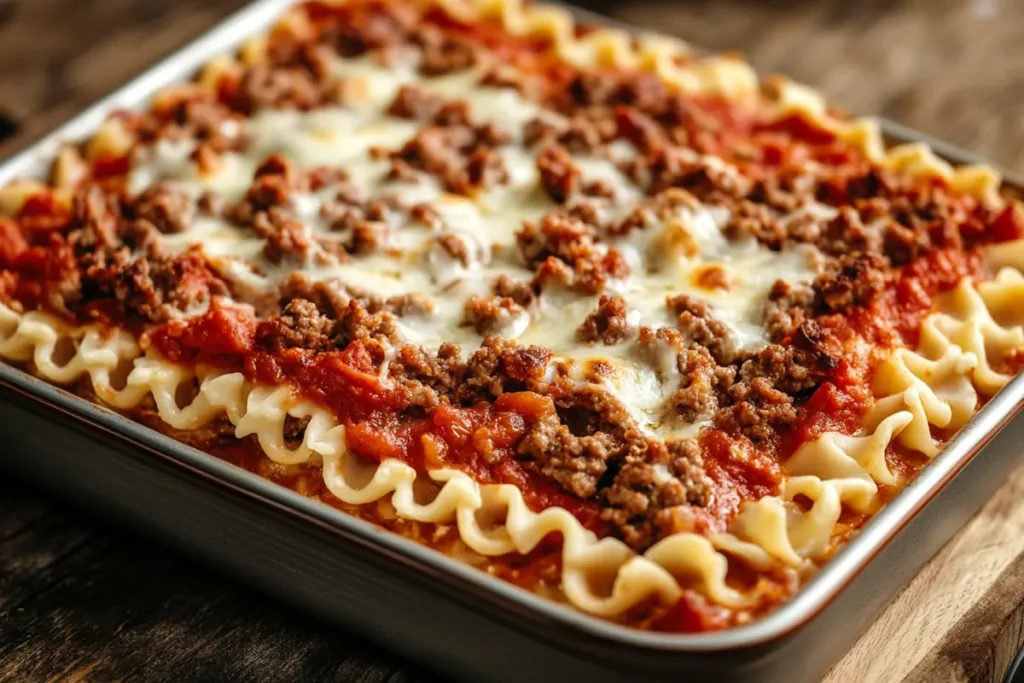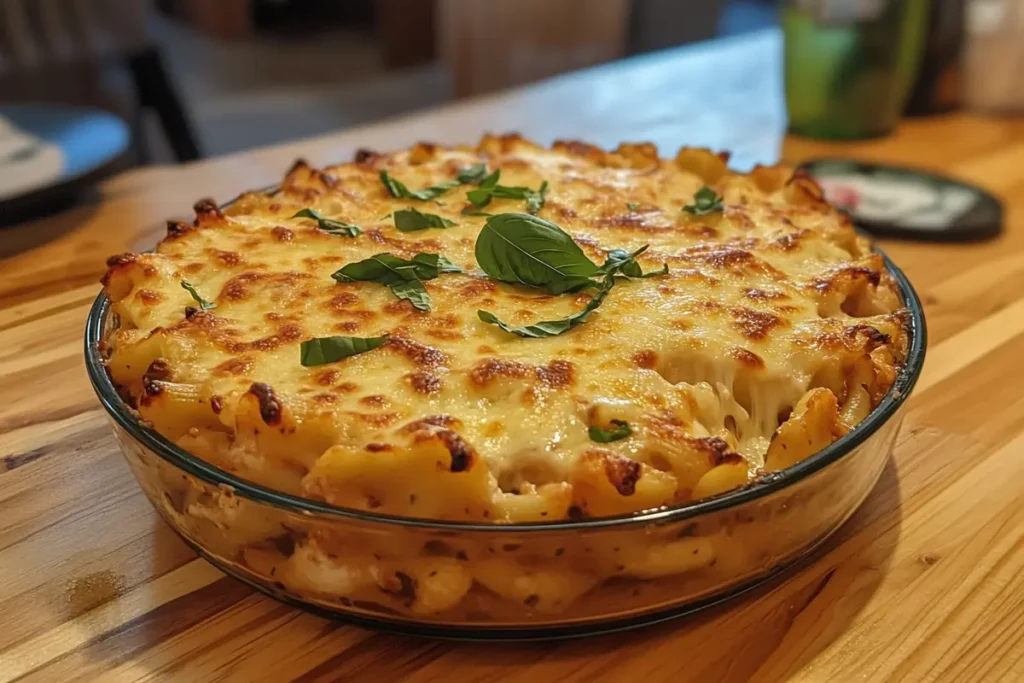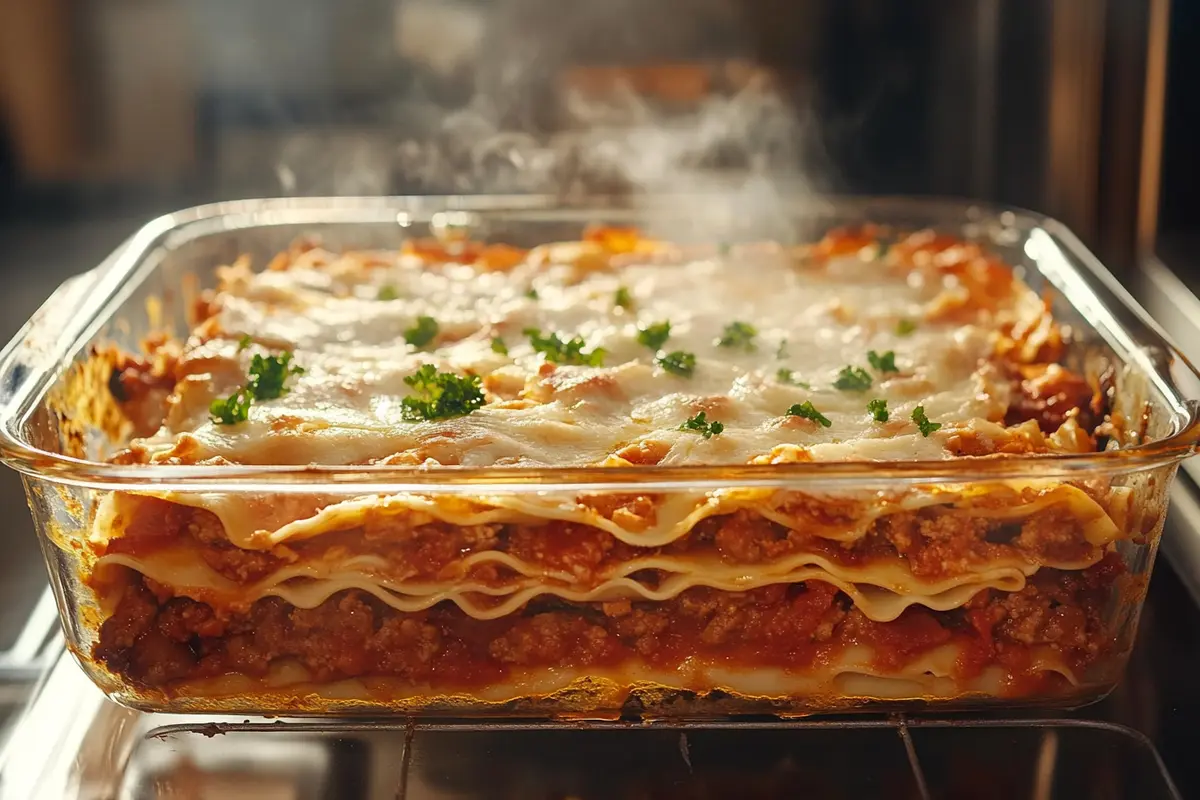Lasagna, a dish loved worldwide, comes with its fair share of cooking queries. One of the most common is: Do you need to boil Barilla lasagna noodles before using them? Whether you’re using traditional lasagna sheets or the convenient oven-ready variety, understanding the right preparation method is key to achieving perfect layers of tender noodles, rich sauce, and melted cheese. This guide will help you master lasagna preparation with Barilla noodles, highlighting when to boil, when to skip it, and practical tips for the best results.
Understanding Barilla Lasagna Noodle
Types of Barilla Lasagna Noodles
When diving into lasagna preparation, it’s essential to recognize that Barilla offers two main types of lasagna noodles: traditional and oven-ready. Each type comes with its own cooking requirements and benefits.
Traditional Lasagna Noodles
Barilla’s traditional lasagna noodles, known for their firm texture and durability, are a staple for many home cooks. These noodles must be boiled before layering in your lasagna dish. Their classic, slightly chewy finish adds authenticity to every bite.
Oven-Ready Lasagna Noodles
Barilla also offers oven-ready lasagna sheets, which skip the boiling step entirely. These sheets are thinner and specifically designed to cook in the oven, absorbing moisture from the sauce to soften. This feature makes them a favorite among busy cooks seeking convenience without sacrificing flavor or quality.
Composition and Ingredients
Barilla lasagna noodles are crafted using durum wheat semolina, which gives them their signature firm texture and golden hue. This high-quality ingredient not only ensures consistent cooking but also impacts the noodle’s ability to hold its shape during boiling or baking.
Whether you’re using traditional noodles or their oven-ready counterparts, understanding their composition will help you tweak your recipes for the best outcome. Choosing the right noodle isn’t just about preference—it’s about what works best with your cooking style and chosen recipe.
Cooking Methods for Barilla Lasagna Noodles
Preparing Traditional Lasagna Noodles
Traditional Barilla lasagna noodles bring a classic touch to this iconic dish, but they need proper preparation to ensure they shine in your recipe. Here’s a detailed guide to boiling these noodles perfectly:
- Start with Ample Water: Use a large pot filled with water to allow the noodles to move freely without sticking. Add a generous pinch of salt for flavor.
- Bring to a Rolling Boil: Once the water is boiling, carefully add the noodles one at a time to prevent clumping. Use tongs or a spoon to separate them gently.
- Monitor Cooking Time: Check the instructions on the package, but generally, boil the noodles for 8–10 minutes. Stir occasionally to prevent sticking, and taste-test for that perfect al dente texture—firm yet tender.
- Drain and Rinse: Once the noodles are done, drain them in a colander. For lasagna, rinsing briefly with cool water stops the cooking process and makes handling easier.
- Lay Flat to Cool: Arrange the noodles on parchment paper or a clean kitchen towel in a single layer. This prevents sticking and keeps them intact until you’re ready to assemble your lasagna.
Pro Tip: If not using immediately, lightly coat the noodles with olive oil to prevent them from drying out.

Using Oven-Ready Lasagna Noodles
Barilla’s oven-ready lasagna noodles are a lifesaver when time is tight. Here’s how to handle them for a flawless dish:
- Prepare the Sauce: Oven-ready noodles rely on moisture from the sauce to soften. Use a thinner sauce than you would with traditional noodles. If your sauce is too thick, consider adding a little water or broth.
- Generously Layer Sauce and Noodles: Spread a layer of sauce on the bottom of your baking dish before placing the first layer of noodles. This ensures they begin to soften immediately. Alternate noodles and sauce, ensuring every noodle is fully coated.
- Don’t Overlap Noodles: Lay the noodles flat without overlapping to ensure even cooking. Slight overlaps may lead to undercooked sections.
- Bake with Care: Cover the lasagna with aluminum foil for the first half of the baking time to trap moisture and cook the noodles thoroughly. Remove the foil for the final 15–20 minutes to achieve a bubbly, golden-brown top.
- Rest Before Serving: After baking, allow the lasagna to rest for 10–15 minutes. This resting period helps the noodles finish cooking while letting the layers set.
Pro Tip: If you’re unsure about the sauce-to-noodle ratio, err on the side of extra sauce. Dry noodles can ruin your lasagna, but extra sauce enhances its flavor and texture.

Additional Insights
- Combining Methods: You can combine traditional and oven-ready noodles in one dish, but remember to treat them accordingly—boil the traditional noodles and ensure oven-ready sheets are well-coated with sauce.
- Special Cases: For gluten-free Barilla noodles, follow similar steps but adjust boiling time based on package instructions, as they tend to cook faster than regular noodles.
Armed with these methods, you’ll have a solid foundation for any lasagna recipe, ensuring that your noodles, whether traditional or oven-ready, contribute to a dish that’s nothing short of spectacular.
Advantages and Disadvantages
Pros and Cons of Boiling Lasagna Noodles
Boiling lasagna noodles is a traditional method that many chefs swear by, but it comes with its own set of benefits and drawbacks. Here’s a closer look:
Advantages
- Enhanced Texture:
Boiling allows you to control the texture of the noodles, achieving that perfect al dente bite. This ensures they won’t become overly soft when baked, adding structure to your lasagna. - Reduced Baking Time:
When pre-boiled, the noodles are partially cooked, so the overall baking time of the lasagna can be reduced. This is especially helpful when baking with delicate fillings like ricotta or spinach that may dry out with prolonged heat. - Even Cooking:
Boiled noodles ensure even cooking throughout the dish, reducing the risk of tough or chewy spots that might occur with undercooked sheets.
Disadvantages
- Extra Preparation Time:
Boiling noodles is an additional step that can add 15–20 minutes to your prep time, which may not be ideal for busy cooks. - Potential Overcooking:
If not monitored closely, noodles can overcook during boiling, leading to a mushy texture that’s challenging to layer neatly. - Increased Cleanup:
Boiling noodles requires a large pot, extra utensils, and added cleanup—a minor inconvenience but worth considering when time is short.
Pro Tip: To avoid overcooking, under-boil the noodles slightly. This ensures they remain firm and absorb just the right amount of sauce during baking.
Pros and Cons of Using Oven-Ready Noodles
Oven-ready noodles offer unparalleled convenience but also come with some trade-offs. Here’s an in-depth look:
Advantages
- Time-Saving Convenience:
Skipping the boiling step is a major time-saver, especially on hectic days. You can go straight from assembling to baking with no extra pots to wash. - Fewer Dishes to Clean:
Since there’s no need for boiling water, you cut down on the number of utensils and cookware required, streamlining the process from start to finish. - Perfect for Beginners:
With oven-ready noodles, there’s no guesswork about boiling time or noodle texture. Simply layer and bake for consistent results.
Disadvantages
- Dependency on Sauce:
Oven-ready noodles rely entirely on the moisture in your sauce to cook properly. If your sauce isn’t generous or thin enough, the noodles may come out undercooked or tough. - Risk of Dry Spots:
When noodles aren’t completely coated with sauce during assembly, they can bake into hard, dry patches. This is especially common at the edges of the lasagna. - Limited Texture Control:
With oven-ready noodles, you’re at the mercy of their design. They’re thinner and softer by nature, which some may find less satisfying compared to the firmer bite of boiled noodles.
When to Choose Which?
- Opt for boiling traditional noodles when you have the time and want full control over the lasagna’s texture and flavor.
- Use oven-ready noodles for quick, hassle-free preparation, particularly when cooking for a crowd or on a tight schedule.
Both methods have their merits, so it really boils down (pun intended!) to your personal preferences, the occasion, and how much time you have to prepare this beloved dish.
Tips for Perfect Lasagna
Ensuring Proper Noodle Texture
Achieving the right noodle texture is essential for a lasagna that doesn’t fall apart on your plate. Whether you’re using traditional or oven-ready Barilla lasagna noodles, these tips will ensure perfection:
- Traditional Noodles: Boil them to al dente—firm yet tender. Slightly undercooking prevents sogginess as the noodles will continue to cook while baking.
- Cooling Technique: After draining, lay noodles flat to avoid sticking. Avoid stacking them directly as they cool.
- Oven-Ready Noodles: Fully cover them with sauce during layering to ensure even cooking. Dry spots can result in undercooked, chewy noodles.
- Baking Time: Follow recipe guidelines closely. Overbaking can make both noodle types too soft, compromising the lasagna’s structure.
By keeping these tips in mind, your lasagna layers will hold firm while being melt-in-your-mouth delicious.
Sauce Considerations
The sauce is the lifeblood of any lasagna, especially when working with oven-ready noodles that depend on it for moisture.
- Consistency is Key: For traditional noodles, a slightly thicker sauce works best. Oven-ready noodles, however, require a thinner sauce to properly hydrate during baking.
- Generous Application: Don’t skimp on sauce! Spread it evenly over the noodles, ensuring there are no dry spots. Add extra sauce around the edges where noodles tend to dry out.
- Flavor Balance: The sauce should be rich but not overpowering. A tomato-based sauce with a balance of herbs and seasoning complements the other layers without overshadowing them.
- Cheese and Sauce Harmony: The cheese layer should blend with the sauce for even cooking. Use soft cheeses like ricotta mixed with a bit of sauce to keep layers cohesive.
Proper sauce planning ensures your lasagna is juicy, flavorful, and cooked evenly from edge to edge.

Frequently Asked Questions
Do you have to boil Barilla lasagna noodles?
It depends on the type of noodle. Traditional Barilla lasagna noodles need to be boiled before layering, but their oven-ready noodles can be used straight from the box.
Can you boil oven-ready lasagna noodles?
Technically, yes, but it’s not recommended. Oven-ready noodles are thinner and designed to absorb moisture during baking. Boiling them may cause them to fall apart.
What happens if you don’t boil traditional lasagna noodles?
If you skip boiling traditional noodles, they may remain tough and chewy, even after baking. Adequate moisture won’t reach the noodles, resulting in an unpleasant texture.
How long should you cook lasagna noodles?
Boil traditional lasagna noodles for 8–10 minutes, or until they’re al dente. Be sure to check package instructions for specific timing.
Are Barilla lasagna noodles oven-ready?
Barilla offers both traditional and oven-ready options. Their Oven-Ready Lasagna sheets are designed to cook without boiling, simplifying preparation.
Do you need to cook lasagna noodles before baking?
Only traditional noodles require boiling before assembly. Oven-ready noodles can be layered directly into the dish with sufficient sauce for cooking in the oven.
Conclusion
Final Thoughts on Preparing Barilla Lasagna Noodles
When it comes to preparing lasagna, understanding the type of Barilla noodles you’re using makes all the difference. Traditional lasagna noodles require boiling for that perfect al dente texture, adding a touch of authenticity to your dish. On the other hand, oven-ready noodles eliminate the need for pre-cooking, streamlining the process while still delivering delicious results when paired with a properly prepared sauce.
The choice between traditional and oven-ready noodles often comes down to your time, preferences, and the recipe at hand. For a traditionalist approach with complete control over noodle texture, boiling is the way to go. However, if convenience is your priority, oven-ready noodles provide an excellent alternative, especially when layered generously with sauce to ensure even cooking.
To achieve lasagna perfection, always pay attention to details like noodle texture, sauce consistency, and baking time. These small considerations can elevate your dish from good to unforgettable. Whether you’re crafting a comforting weeknight dinner or preparing for a special occasion, Barilla lasagna noodles—be they boiled or oven-ready—are your reliable partner in culinary excellence.
With these tips, you’re well-equipped to create a lasagna that’s as visually stunning as it is delicious. Now, it’s time to roll up your sleeves and start layering!

